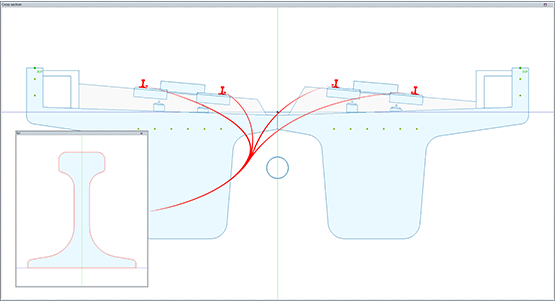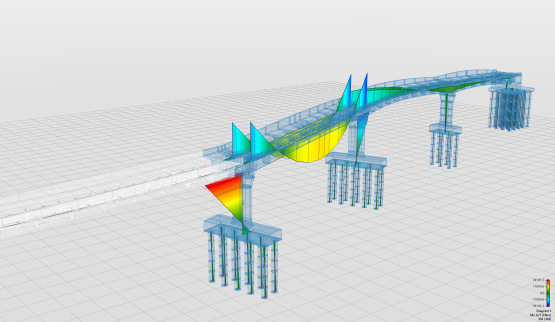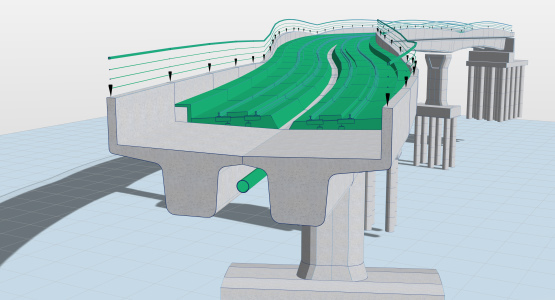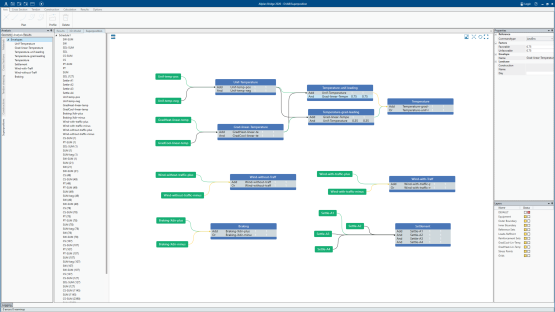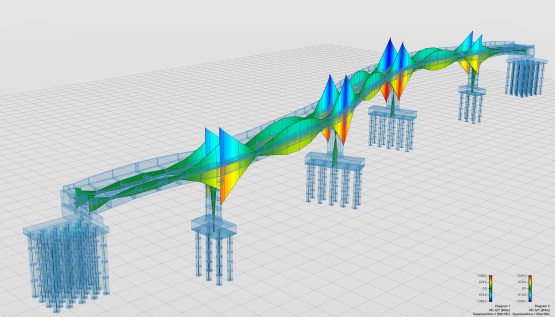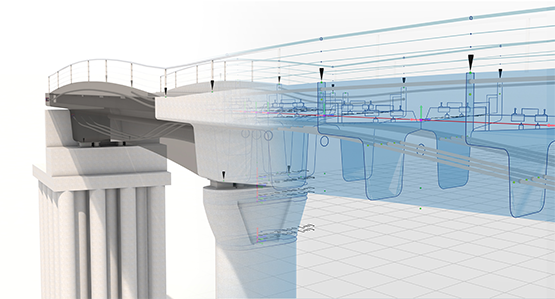Model creation without compromise
Allplan Bridge has been developed by recognized bridge experts – Allplan Infrastructure from Graz – and to the requirements of bridge engineers. The 3D parametric model description considers the road layout, bridge alignment and required cross-sections, making model configuration quick and efficient. Complex geometries including double curved alignment and variable cross-sections can be created easily with the help of alphanumeric entries and formulas. For example, the user only needs to define one typical cross-section and Allplan Bridge will accurately calculate all cross-section variants in accordance with the defined table(s) or/and formula(s). A complete 3D Bridge model cannot be generated more easily or quickly.







